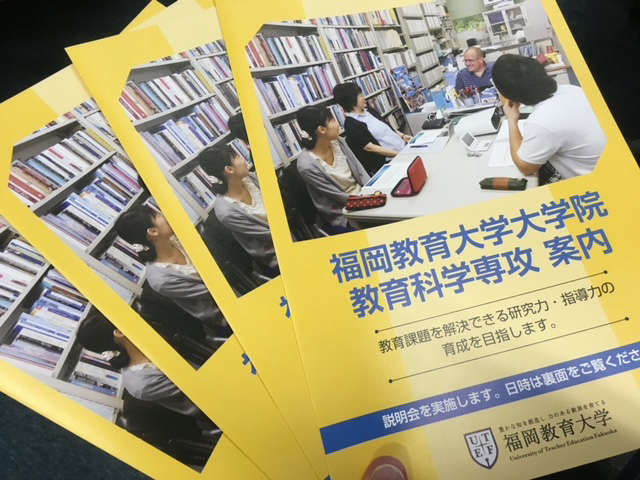
Since I am a professor on the faculty of an education-focused university, an overwhelmingly high percentage of our students are actively training, studying and preparing to become school teachers from the kindergarten level up through the high school level.
Not too long ago, my university began specializing in elementary education so the majority of our students plan to become elementary school teachers when they graduate. We are the only university in the Kyushu area that is solely devoted to education. Other universities have education departments, but we basically have one faculty and that is education.
There are primarily three types of universities and junior colleges in Japan: national, public and private. The most prestigious institutions tend to be the national universities, but a number of private, older institutions in the Tokyo area called the “Tokyo Six” are very popular and make up what could be compared to the Ivy League schools in the United States.
These are Waseda University, Keio University, Meiji University, Hosei University, Rikkyo University and the University of Tokyo (roughly the Harvard of Japan). These universities are considered to be the top institutions in Japan and are very tough to enter, with many students taking entrance exams more than once, spending the entire year that they failed to study intensively to try again to gain entry.
Of course, there are many other top universities sprinkled throughout Japan that have tough entry requirements as well, but the universities listed above have developed such good reputations that students know when they graduate from one of those, they will more than likely be recruited for a good job in a well-known company upon graduation.
The University of Tokyo was established in 1877 and was the first “national university” in Japan. There are 86 “national universities” in Japan, and over 90 “public universities”, with over 600 “private universities” spread out all over the country. Generally speaking, national universities tend to be more prestigious than public or private universities, and because they are subsidized by the government, tend to be cheaper, especially when comparing the tuition costs to private universities.

Public universities receive the bulk of their funding from local governments, either municipal or prefectural. As expected, while private universities do receive some public funding the majority of their budget comes from student tuition and other types of revenue. Private universities in Japan really have lovely campuses and tend to be well-maintained, similar to how university campuses are kept in the U.S.
National universities, on the other hand, typically look rundown and in need of some old-fashioned TLC. In 1983, I visited the University of Tokyo at its Komaba campus for the first time and I remember being shocked that it was so widely touted as the crème de le crème of academic institutions because the landscape was covered in overgrowth and the buildings were in great need of a good paint job. The campus just looked sad and neglected. It still looks like that today, by the way.
I suppose the buildings and grounds shouldn’t be that important in the whole scheme of things, after all, the academics, faculty members, and research aspects are what are really most important, but it just seemed odd to me that such a prestigious and hallowed university was allowed to be so shabbily maintained.

Columnist Todd Leonard's office at the University of Teacher Education Fukuoka.
For the past 14 years, I have been on the faculty of a national university and the conditions are quite similar to that of the University of Tokyo. The grounds and buildings always look unkempt with discarded equipment and items being stored in plain sight without proper disposal, wild and uncut overgrowth outside, and the obviously aging and poorly-maintained buildings look unwelcoming. However, they are still considered to be the most prestigious and students certainly clamor to try to get accepted, so the atmosphere is not a big turn off to potential students it seems.
My university, the University of Teacher Education Fukuoka (UTEF), prides itself as being an anchor institution for education in the region that fosters education-related research, while promoting intellectual development and personal growth by training future teachers with specialized knowledge and teaching skills. One huge advantage we have as a national university focusing on education is the attached school system we have in place that allows our students to do their practice teaching, as well as to observe lessons regularly in the attached schools. We have seven attached schools from kindergarten through junior high school connected to our university.

Teaching a licensing course to elementary teachers in an in-service training course.
The campus has such great potential because it is surrounded by nature, nestled on the side of a mountain, but nothing is really done to keep it nice and manicured. Fukuoka has a sub-tropical climate which means we get a lot of rain and it gets really hot and humid in the summer, so plants grow so quickly that it is hard to keep the lawns and areas properly maintained.
Our campus is comprised of nearly 600,000 square meters and while small in size and scope compared to universities in the U.S., we have a combined enrollment of nearly 3,000 undergraduate and graduate students. This is a good thing because we tend to have smaller classes which offer more one-on-one student to instructor contact than other universities that have a much larger student enrollment.

Graduate school pamphlets for recruiting students.
Because our university is on a mountain, I have no problem getting my steps in each day. There is a lot of going up and down to get to different buildings for meetings and classes. The mountain also has a lot of wildlife like monkeys, wild boar, and some rather nasty snake species, not to mention huge spiders, centipedes, and other creepy-crawlies that sometimes make their way into the buildings.
Admittedly, I am not a fan of this aspect of being in the midst of nature, but I do love the scenic views from the buildings of the surrounding area. So, one has to accept the bad with the good, I suppose.
Todd Jay Leonard was born and raised in Shelbyville but has called Japan home for over 35 years. He is currently a full professor at the University of Teacher Education Fukuoka in Kyushu where he lives, writes and teaches. He is the author of 27 books and can be reached at toddjayleonard@yahoo.com






